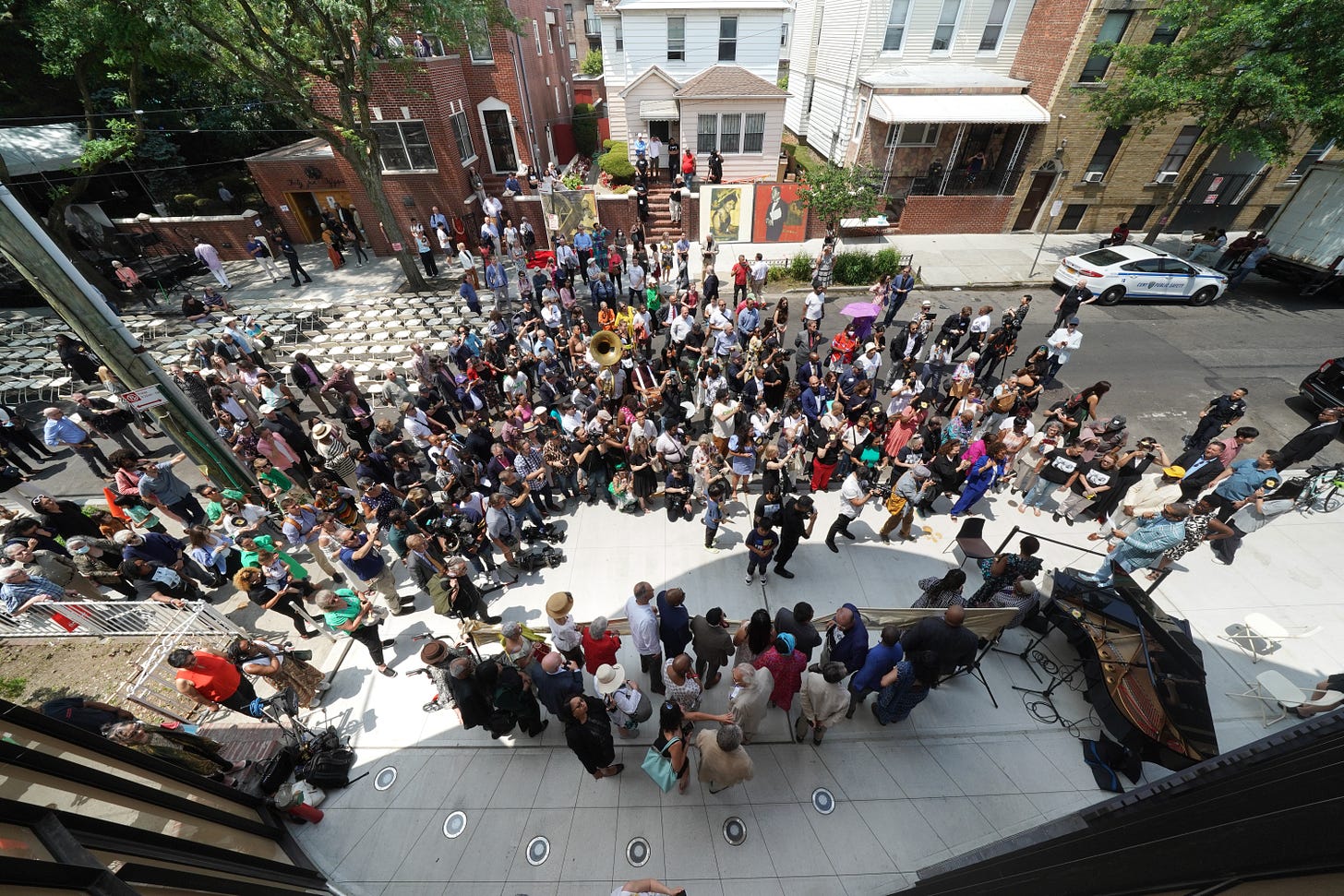
Inside the new Louis Armstrong Center, just across the street from Armstrong’s house on 107th Street in Corona, Queens, a handful of display cases contain artifacts from the immortal artist’s career: his trumpet and case, two passports, a few of his trademark photo collages. There’s also a series of loose-leaf pages framed and hung on one wall. “Our Neighborhood,” reads the title of this manuscript, which Pops wrote in cursive with a blue ballpoint pen. “When my wife Lucille + I moved into this neighborhood there were mostly white people,” he begins. “A few colored families.”
Armstrong goes on:
Just think — through the (29) years that we’ve been living in this house, we have seen just about (3) generations come up on this particular block. Lots of them have grown up — married, had children. Their children + they still come and visit Aunt Lucille + Uncle Louis.
During the press opening and ribbon cutting for the Armstrong Center one week ago, I struck up a conversation with someone who fits this description. He introduced himself as Andre Maloy. His aunt, Dorothy Davenport, owned a bar and grill called Davenport’s Lounge on Northern Boulevard; Louis and Lucille were regulars. On his phone, Andre showed me old pictures of his aunt with Pops, all smiles. He said he was over at the Armstrongs’ all the time as a kid. He was 9 when Louis died in 1971.
“The people, the demographics have changed,” Ricky Riccardi, Director of Research Collections at the Louis Armstrong House Museum, told me after the ribbon-cutting. “But the neighborhood values remain the same. It’s still working-class people. It’s common folk. Louis used to refer to himself as ‘a salary man.’ The fact that he was the most famous musician in the world, OK, fine. He would say, ‘It’s just another hustle.’” To some extent, the presiding miracle of the Louis Armstrong House Museum is this insistence on the ordinary, when Pops of course was extraordinary in all respects.
Along with folks from the neighborhood, the ceremony included a fair helping of city officials, and a touch of unexpected drama. (Queens Assemblyman Jeff Aubry was knocked over by a fleeing car thief after delivering his remarks. The thief was pursued down the block by several police officers; the New York Times ran this report.)
But the festive air proved indomitable. A brass band paraded across the street from the Armstrongs’ stoop to the new building, playing “The Second Line.” A coterie of trumpeters, including Jon Faddis, Steven Bernstein and Riley Mulherkar, played a harmonization of the “West End Blues” fanfare and the melody of “What a Wonderful World.” Jason Moran, who curated the first exhibition at the Center, played a solo piano take on “When It’s Sleepy Time Down South.”

After the doors opened and everyone took their first spin through the space — eyeing those letters, and those passports, which Moran displayed with intention — I went upstairs to conduct a few interviews for a feature that ran this evening on All Things Considered. Find it here, if you please, with an accompanying essay for NPR Music.
During his public remarks, Moran alluded to Armstrong’s first passport picture, from 1930, describing a parochial innocence in his gaze. In our interview, he drew a parallel: “I think about this museum like that first passport picture — it’s naïve, you know? This is Day One. So then, OK, we’ll do the next 30 years.”
Moran had a lot more insights to share, and he compressed them into a brisk 10 minutes of conversation. If you support The Gig as a paid subscriber, keep scrolling to hear the interview and read a transcript. Whatever the case, thanks for reading this far. Oh, one more thing: Pops is tops! Now and forevermore.
Keep reading with a 7-day free trial
Subscribe to The Gig to keep reading this post and get 7 days of free access to the full post archives.



